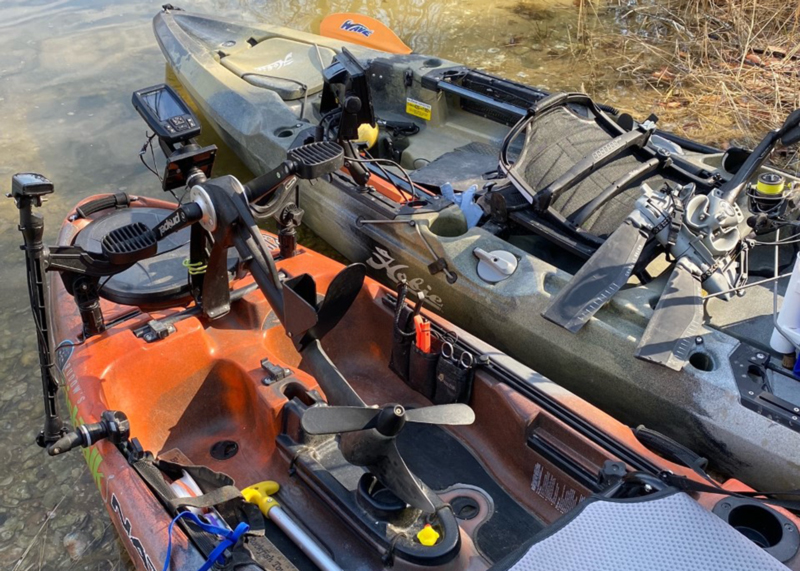When I first started kayak fishing it never crossed my mind that someday I would be pedaling one. That doesn’t mean I only use a pedal kayak on every outing, though. In fact, there are pros and cons to using each while fishing.

I started looking to buy a kayak as a platform to fish from years ago and one of the first things I needed to consider was cost. Pedal fishing kayaks are substantially more expensive than a conventional paddle kayak. Not to say that a good quality paddle kayak can’t be expensive, too. The cost for a pedal or paddle kayak can range from just over a $1000 dollars to up to $5000 or $6000 dollars, but generally speaking pedal systems cost more.
I also had to consider the type of fishery I wanted to fish. Would I be on a local river, stream, lake, or large pond? Did I need to spend the additional cost of a pedal kayak to fish the small local lake near my home? At that time my answer was no. I was still working full time and I had limited time on the weekends to fish. Traveling short distances on the small local lake didn’t warrant the additional cost for me. But when I retired and sought out fisheries that were substantially larger and farther from home, a pedal kayak became my boat of choice.
I currently use a pedal-drive system that has a prop requiring a 13-inch draft, while my paddle kayak only requires a few inches. The is one big advantage of the paddle kayak: that it can fish very skinny water. I can park it on top of lily pads or grass to fish deeper back into the grasses for, let’s say, snakehead fishing. I also worry less about the tides and water getting low as I fish. But that doesn’t mean I can’t lift the pedal system up out of the water on my pedal kayak. There are also fin systems, where the fins kick up when they strike bottom or a solid object and then return when cleared of obstructions. The fin type of drive has this advantage over fixed pedal systems, but the disadvantage is having to change gears when changing direction as opposed to simply pedaling backwards.
Pedal kayaks are normally wider than a paddle kayak. The stability of the extra width allows you to stand while fishing, giving you the option for sight casting in thin water. But the negative side of having a wider kayak is that they don’t track as well and tend to drift off course slightly, requiring you to adjust your course now and then.
Most anglers will agree that the biggest single advantage of a pedal system is that they’re hands-free. I don’t have to think about where I have to place my paddle while fishing or landing a fish. Plus, range is extended and I can reach and fish further up the lake or down the river with a pedal system.
Also take the weight of the kayak into consideration. Pedal system kayaks tend to be heavier than paddle kayaks. Will you be transporting it on a car top, in the bed of a truck, or will you be trailering it? Weight will dictate how easy or difficult transporting it may be. Also think of the fishery where you plan to use the boat. If you are fishing a river, will you need to portage the kayak over the course of the day of fishing?
Pick a kayak that fits your budget, has the advantages most important to you, and meets your angling needs. And most of all, have fun out there on the water!
-By Eric Packard